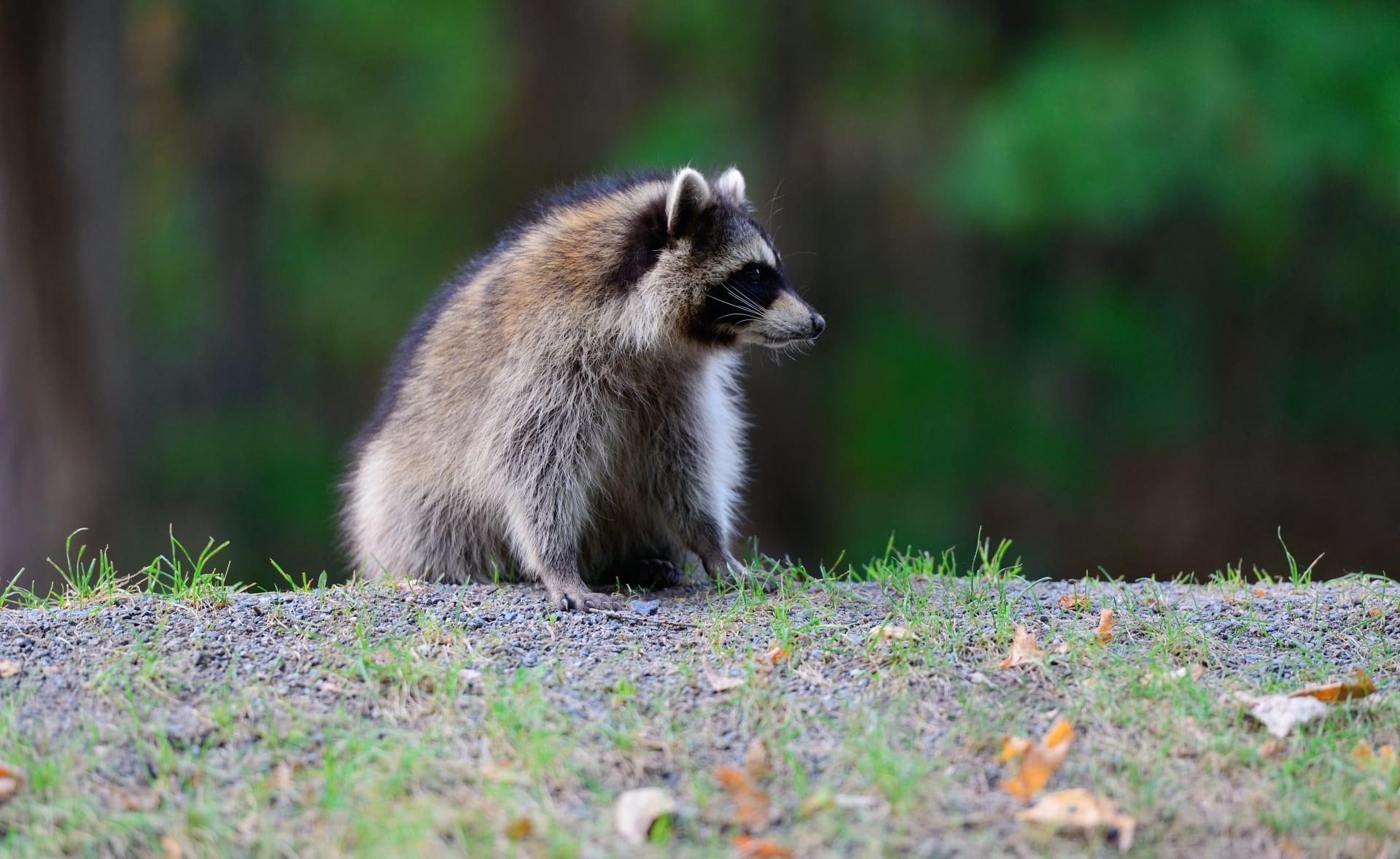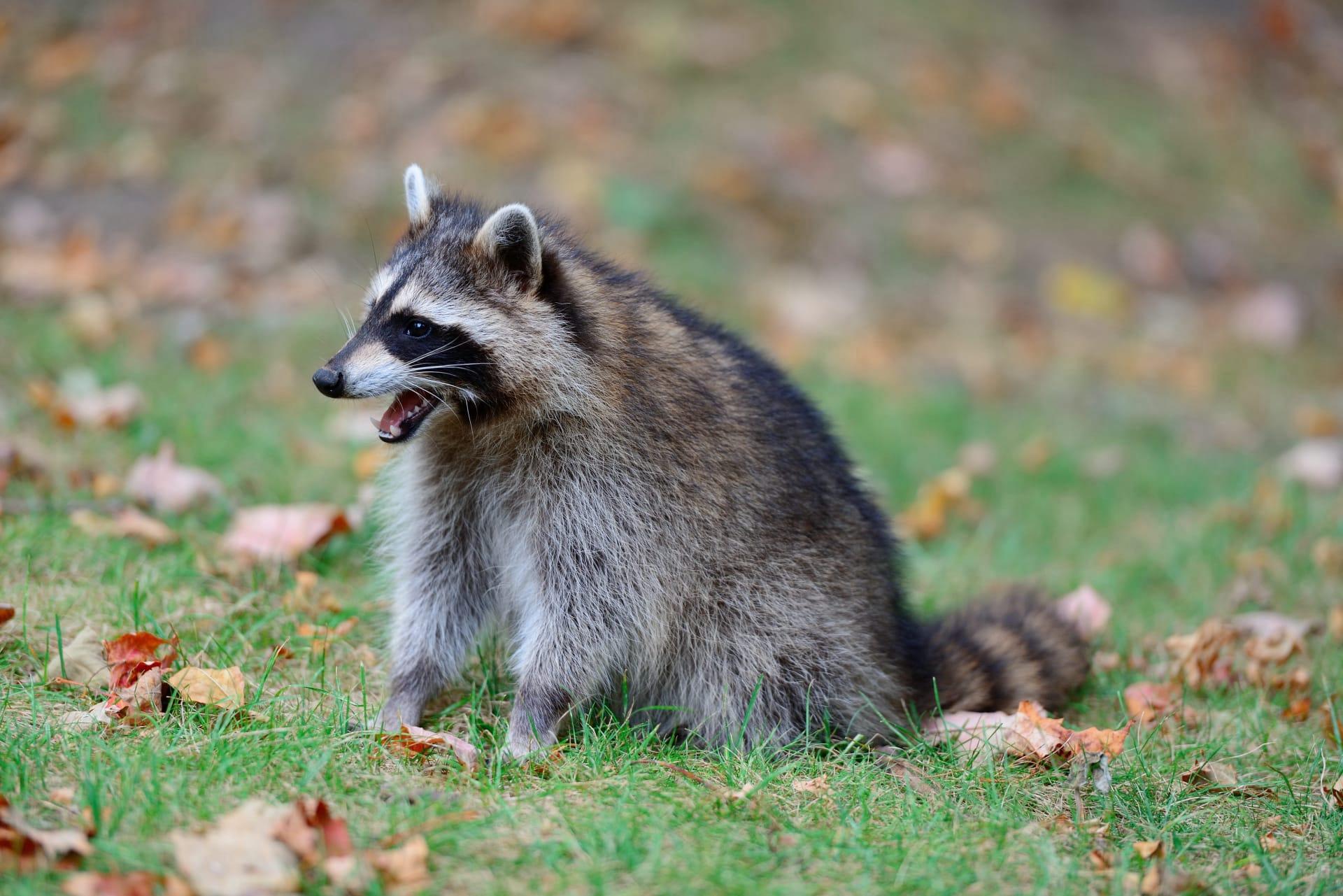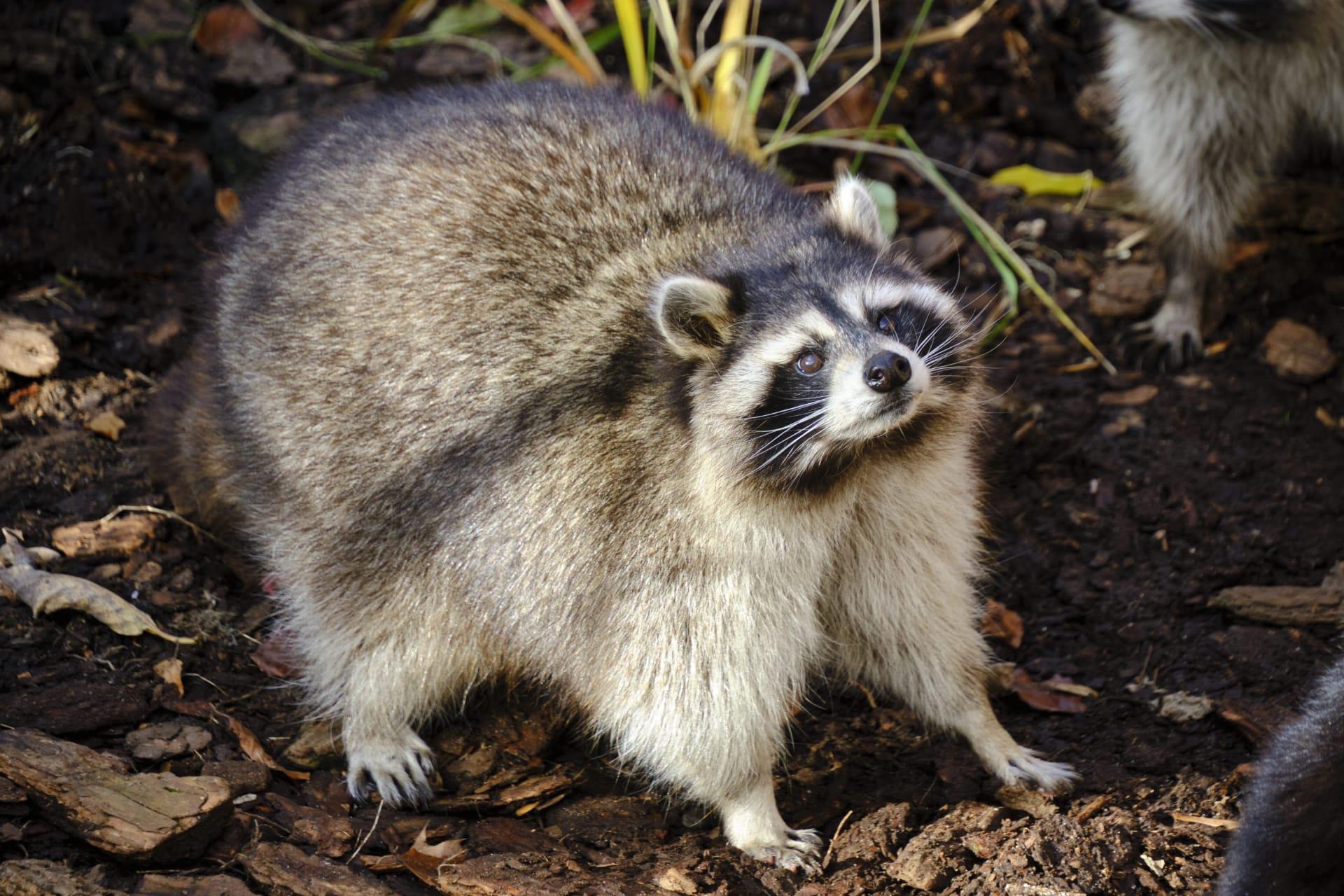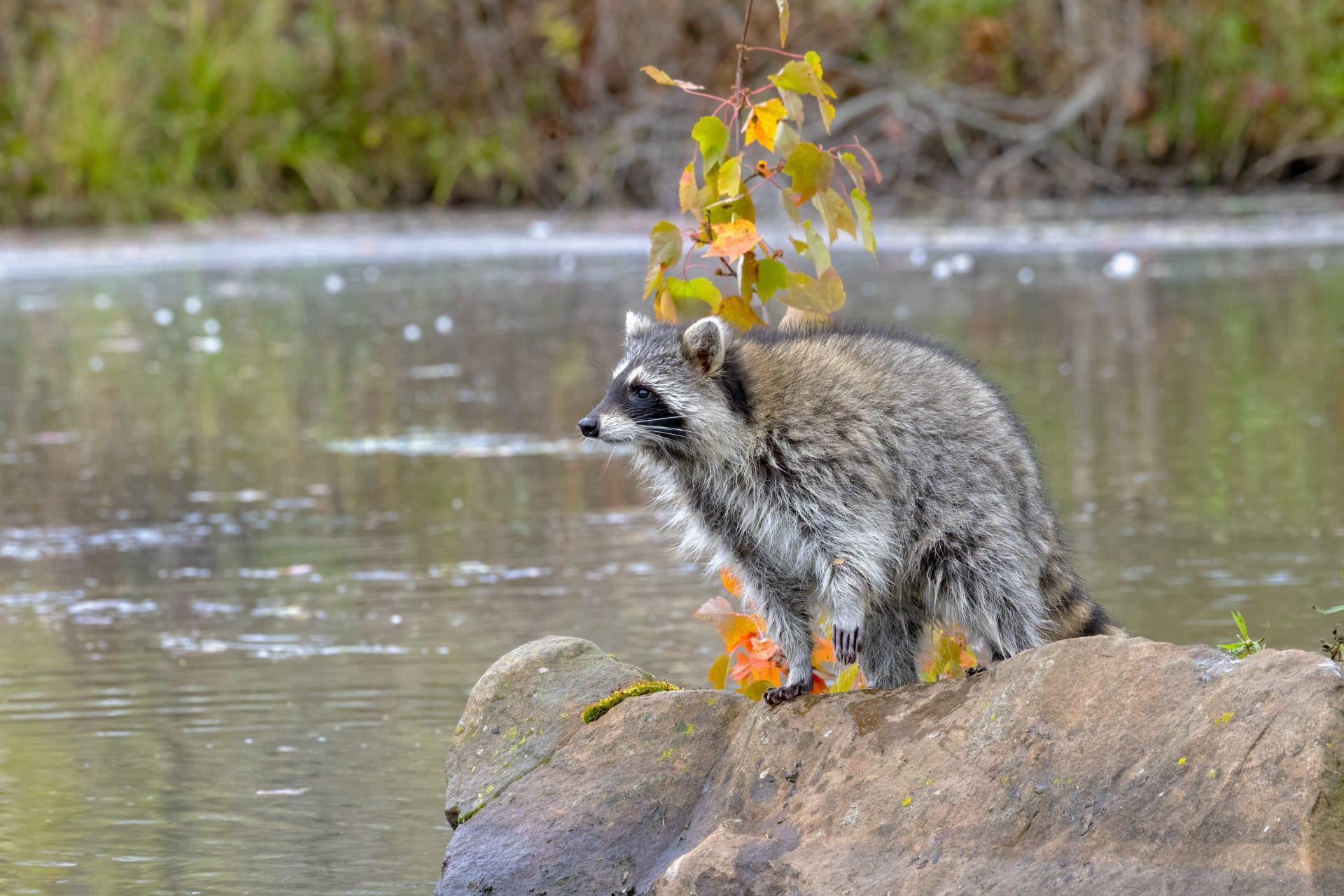Raccoon Characteristics
- Home /
- Mini Encyclopedia /
- Animal /
- Raccoon Characteristics
1
Raccoons, known scientifically as Procyon lotor, are medium-sized mammals notable for their distinctive black mask and ringed tail. Adults typically measure about 16 to 28 inches in length and weigh between 5 to 20 pounds. Their lifespan in the wild averages 2 to 3 years, though in captivity, they can live up to 20 years. Raccoons have a robust and versatile physique, with a dense underfur that insulates against cold weather. Their coloration varies from gray to brown, with a bushy tail that features anywhere from 4 to 10 black rings.
One of the most remarkable organs of a raccoon is its highly sensitive front paws. These paws are much more dexterous than those of many other mammals, resembling human hands in their ability to grasp and manipulate objects. Raccoons use their tactile paws to explore their environment, detect food in murky water, and uncover potential prey. The nerve endings in their paws are incredibly sensitive, allowing them to identify objects without directly seeing them. This adaptation is particularly useful when foraging in water, as it aids in locating food items beneath the surface.

2
Question: Why do raccoons 'wash' their food before eating?
Answer: This common behavior, often described as 'washing,' is not actually about cleanliness. Raccoons lack salivary glands to moisten food, so they dunk food in water to aid in mastication. This habit also helps them better feel the texture and hardness of the food, as their sensitive paws are more responsive when wet. This behavior is more pronounced when they are near a water source. However, raccoons will still rub and roll their food in their paws even when water is not available, demonstrating their reliance on tactile information for feeding.

3
Raccoons are agile climbers and capable swimmers. They are primarily nocturnal and use their keen sense of touch and hearing to navigate at night. Raccoons are proficient climbers, able to scale trees, walls, and fences with ease. Their strong hind legs and sharp claws aid in climbing, while their front paws are adept at grasping and holding. In water, raccoons swim using a dog-paddle style and can remain submerged for several minutes.
Their diet is omnivorous, feeding on fruits, nuts, insects, small mammals, and eggs. Raccoons are opportunistic feeders, often scavenging in garbage cans and campsites. They have a particular skill in opening containers and unwrapping items. Their foraging behavior is both tactile and visual, using their sensitive paws to probe for insects under logs or stones and to catch aquatic prey like crayfish. Raccoons also have a keen sense of smell that aids in locating food.

4
Raccoons are highly adaptable creatures, thriving in a range of environments including forests, mountains, marshes, and urban areas. Their adaptability to urban environments is notable; they often dwell in attics, sewers, and abandoned buildings. This flexibility in habitat choice is key to their survival, as they can exploit a variety of food sources in different environments.
Raccoons breed once a year, typically in late winter to early spring. Females give birth to litters of 2 to 5 kits after a gestation period of about 63 days. The young are born blind and deaf, completely dependent on their mother for survival. The mother raises the kits in a den, which can be in a hollow tree, an abandoned burrow, or even a secluded attic. The kits develop rapidly, opening their eyes after about 18 to 24 days and venturing out of the den by 8 to 10 weeks.

5
Book: "Raccoons: A Natural History" by Samuel I. Zeveloff provides a comprehensive overview of raccoon biology and behavior. Published in the United States in 2002, Zeveloff, an American biologist, offers insights into the evolution, habitat, and social structure of raccoons. He also delves into their adaptation to urban environments, making it an informative read for both wildlife enthusiasts and urban dwellers.
Book: "The World of the Raccoon" by Lawrence R. Heaney, published in 1987 in the United States, is another notable work. Heaney, a renowned mammalogist, offers a detailed account of the raccoon's life cycle, diet, and ecological impact. The book is praised for its thorough research and is particularly focused on the raccoon's interaction with its environment, providing valuable information for ecologists and naturalists.